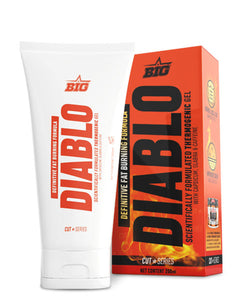
The Devil dresses in gel
Sergio Guerrero
INTRODUCTION
In this new entry we will address in detail the recommended use and functionality of thermogenic and anti-cellulite gels, as well as the main components and their necessary concentrations for greater effectiveness.
The BIG website details the product formulated by the development team. The product, DIABLO GEL , is presented in a 200 ml format and whose main components are the following:
- Caffeine with a minimum % concentration of 5%
- Capsaicin
- Glabra Root Extract
- Centella Asiatica Extract
- L-Carnitine
- Menthol
- Essential oils

MECHANISM OF ACTION
The usefulness of topical products such as creams with a lipolytic effect have been developed and sold around the world as one of the many categories of products marketed to facilitate rapid and safe weight loss. A cream is a pharmaceutical form that consists of two phases: a lipophilic phase and an aqueous phase in whose composition they have an active ingredient that can be of animal, vegetable, mineral or synthetic origin and an excipient .
Lipolysis is the metabolic process by which triglycerides found in adipose tissue are divided into fatty acids and glycerol to satisfy energy needs and are regulated by glucagon, catecholamines and insulin, among others, and biochemical signals that converge in adipocytes. to regulate the function of lipases and non-enzymatic accessory proteins.
Caffeine improves lipolysis (Fig. 1) and fat oxidation and can be magnified when combined with other thermogenic agents. It has been shown that caffeine is effective in penetrating through the skin , interfering with the secretion of catecholamines that activate β-2 adrenergic receptors and, in turn, increase the concentration of cyclic adenosine monophosphate (cAMP) in the cells that activate lipase in the lipolysis process. Caffeine can prevent fat accumulation and can accelerate lipolysis by blocking α-adrenergic receptors through phosphodiesterase (PDE) inhibition .

- Figure 1: Mechanism of action of caffeine during lipolysis in adipocytes
Capsaicin (the spicy ingredient in red chili) has an analogous non-spicy molecule found in the sweet pepper variety CH-19, which is called capsiate. Several published studies have demonstrated the impact of both capsaicin and capsiate on energy expenditure and fat oxidation.
Capsaicin stimulates the sympathetic nervous system (SNS) and increases energy metabolism in humans through stimulation of sensory nerves . Since capsaicin increases the secretion of catecholamines through activation of the central nervous system, it is proposed that its thermogenic effect is due to β-adrenergic stimulation of the metabolic function of brown adipose tissue (BAT) . Both capsaicin and capsiate are agonists of the transient receptor potential vanilloid 1 (TRPV1). Therefore, it is suggested that the thermogenic and metabolic effects of capsaicin and capsiate are due to the activation of TRPV1 (Fig. 2). This activation of TRPV1 is what causes the sensation of heat when applying a cream/gel topically.

- Figure 2: TRPV1-mediated activation of thermogenic activity in BAT.
Glycyrrhetinic acid, the active ingredient in licorice root , blocks 11β-hydroxysteroid dehydrogenase type 1 What? To make it easy, it is also known as cortisone reductase. This enzyme intervenes in the synthesis of cortisol, and this participates in the distribution and deposition of fat. The glycyrrhetinic acid present in licorice blocks the activity of cortisone reductase, thus reducing the activity of cortisol at the adipocyte level .
Proof of this is the study published by Armanini, D et. al, 2005, where 18 women with a normal BMI were given a cream with a 2.5% concentration of glycyrrhetinic acid or another cream with a placebo.
Before and after 1 month of treatment, both the circumference and the thickness of the superficial fat layer of the thighs were measured (by ultrasound analysis).
The circumference and thickness of the superficial fat layer were significantly reduced compared to the untreated contralateral thigh and to control subjects treated with placebo cream Fig. 3.

- Figure 3: Absolute change in circumference at the base of the thigh in patients treated with GA cream (left figure) or placebo (right figure)
Gotu kola, also known as Centella asiatica, has active compounds such as pentacyclic triterpenes and has been used in the treatment of small wounds, burns, psoriasis and scleroderma (Fig. 4). The mechanism of action is to increase fibroblast production, collagen synthesis and fibronectin content . In addition, it can improve the tensile strength of newly formed skin and reduces the inflammatory phase of hypertrophic and keloid scars. In a study of 60 people with cellulite, Brinkhaus et. Al, 2000, reported that the application of gotu kola showed a beneficial effect in reducing the progression of cellulite, as well as a significant improvement in 85% of participants without adverse reactions.

L -carnitine is an amino acid used by the body for β-oxidation by transporting long-chain fatty acids across the mitochondrial membrane (Fig. 5). It is used for energy production and fat metabolism in the heart and skeletal muscle. L -carnitine has been used for various purposes, including improving diabetes and obesity.
L-carnitine in combination with the rest of the components has been shown to reduce thigh fat mass, thigh circumference and thigh skin fold thickness.

- Figure 5: Role of carnitine in the transport of fatty acids.
Topical application of menthol is a popular form of cold therapy and chemically activates cold receptors and increases cutaneous blood flow.
Menthol is an ingredient that activates transient receptor potential melastatin 8 (TRMP8) channels. Menthol and cold therapy provide cold sensations in addition to an analgesic effect. In contrast to traditional ice therapy which decreases skin blood flow, menthol has been shown to increase skin blood flow. This increase in cutaneous flow is produced by activation of TRMP8 receptors on vascular cells, which in turn increases the production of nitric oxide by endothelial cells, producing localized vasodilation.
Activation of adipocyte TRPM8 results in Ca 2+ influx and activation of protein kinase A (PKA), which induces mitochondrial elongation, mitochondrial localization in lipid droplets, lipolysis, β-oxidation, and the expression of UCP1. TRPM8 agonism increases basal metabolic rate, non-shivering thermogenesis, oxygen consumption, exercise endurance and fatty acid oxidation and decreases abdominal fat percentage.
Proof of this is the essay published by Hunter, AM, et. al, in 2018 where 20 healthy male subjects were recruited. These subjects were treated on three separate days in random order with ice, a menthol-based gel, or a placebo gel on the anterior thigh. All measurements were taken at baseline and for 80 minutes after treatment: 1) Skin, core, and intramuscular (1 and 3 cm depth) temperatures; 2) femoral arterial blood flow (duplex ultrasound); 3) cutaneous blood flow (laser Doppler) and 4) subjective cold sensation.
Regarding the results obtained, it is suggested that the menthol gel increased cutaneous blood flow by 0.3 ml/min compared to the placebo gel. Skin perfusion showed a significant difference between treatments with menthol gel significantly greater than placebo gel and ice (Fig.6)

- Figure 6: Skin blood flow from baseline (pretreatment) menthol gel, placebo gel and ice.
Menthol gel increased cutaneous blood flow and reduced intramuscular and skin temperatures without altering femoral arterial blood flow or core temperature.
Therefore, as we have seen previously, capsaicin causes a sensation of heat through the activation of TRPV1 and menthol produces a sensation of coolness through the activation of TRPM8; therefore, these two chemicals cause opposite thermosensation reactions (Fig. 7).

- Figure 7: Thermogenic and anti-obesity effects of cold and some food ingredients through TRP-BAT Activation.
Essential oils (EO) are present in the petals of flowers, the exocarp, the resin, the bark of trees and the roots of aromatic and medicinal plants. Also known as “essences”, they are characterized by the presence of volatile substances at room temperature, which can give them different odors and fragrances.
Recent studies have shown that essential oils (EO), thanks to their components, promote the reduction of fat mass and exert anti-obesity effects. It is important to note that essential oils can exert these effects both when taken with the diet and when inhaled.
As we have been reporting throughout almost the entire article, TRP channels have become potential pharmacological targets for a variety of pathophysiological conditions, including obesity. Among the TRP channels, the role of TRPV1, transient ankyrin receptor potential 1 (TRPA1) and TRPM8 in the regulation of metabolism and energy homeostasis stand out in particular.

- Figure 8: Schematic representation of the effects of essential oils in the reduction/prevention of obesity and obesity-related diseases.
USE AND PRACTICAL APPLICATIONS
Before indicating their use and practical applications, we will give some examples of the use of these types of gels for the treatment of adiposity/cellulite.
The first of them is the study by Greenway, FL, et. al, 1995. In this study, a series of clinical trials were initiated using a thigh as a double-blind control.
Test #1: Five overweight women received isoproterenol injections at intervals around the thigh three times a week for 4 weeks on diet and walking.
Test #2: Five overweight women received a cream containing forskolin, yohimbine and aminophylline applied to the thigh five times a week for 4 weeks after warm hypertonic baths with a diet and walking.
Test No. 3: Eighteen overweight women were divided into three groups of six and test No. 2 was repeated with each agent isolated vs. placebo with forskolin, yohimbine or aminophylline in separate creams.
Test #4: Thirty overweight women received 10% aminophylline cream on their thigh five times a week for 6 weeks with diet and walking. Chemical panel, theophylline level, and patch testing were performed.
Test #5: Twelve women repeated test #4 with 2% aminophylline cream without diet or walking.
Test #6: Test #5 was repeated with 0.5% aminophylline cream.
All trials except yohimbine ointment resulted in significantly greater circumference loss in the treated thigh. The chemistry panel showed no toxicity. Theophylline was undetectable and patch testing was negative. “We conclude that topical fat reduction for women's thighs can be achieved without diet or exercise.”

- Figure 9: Changes in thigh circumference and total body weight in five subjects after treatment with aminophylline ointment or placebo.
- *Aminophylline is a xanthine, like caffeine.
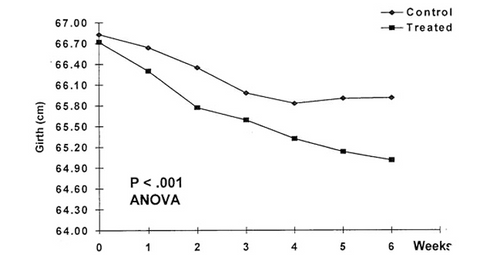
In 2007, Caruso, MK, et. al, recruited 50 men and women aged 21 to 65 years with a BMI greater than 27 kg/m2 and an average waist-to-hip ratio. They were randomized in a 1:1 ratio and given 0.5% aminophylline cream on the waist twice daily or not at all. All subjects were instructed to follow a balanced 1200 kcal diet, participate in a walk and return program every two weeks to encourage compliance. A theophylline level was drawn monthly, and waist, BMI, and waist-to-hip ratio were measured again at 12 weeks.
At week 12, there was a significant reduction in BMI from baseline that was not different between groups. The reduction in waist circumference was 11 ± 1 cm in the aminophylline cream group and 5 ± 0.6 cm in the control group.
The reduction in waist circumference was significant for both women and men, but women lost significantly more waist circumference. The waist-to-hip ratio, a measure of fat distribution, decreased. Aminophylline levels were undetectable and there were no adverse events.

- Figure 11: Changes in waist circumference (cm) from baseline in the two groups and separately for men and women.
In 2007, Escalante, G. et. al, they used a cream based on caffeine, aminophylline, yohimbine, L-Carnitine and Gotu Kola. Seven participants underwent double-blind pre- and post-exercise testing to assess weight, bilateral thigh circumference/skinfold thickness, and body composition/thigh fat mass using dual-energy X-ray absorptiometry. Participants followed a low-calorie diet, walked 150 minutes per week, and were randomly assigned to apply a placebo to one leg and the topical preparation to the other leg for 28 days.
Results: A significant interaction between time and group was found for thigh circumference and fat mass.
In 2019, Cortés, E. et. al, they used a cream based on Caffeine, L-Carnitine, Vitamin C, Alga focus, Gotu Kola and green tea. 102 patients were recruited and the inclusion and exclusion criteria were applied; 45 and 47 cases were included and analyzed, respectively. The initial weight ranged between 85.9 kg vs 85.08 kg; perimeters: starting waist 100.4 cm vs. 99.7 cm; initial arm 32.9 cm vs 33.4 cm; initial hip: 108.6cm vs 107.7.
Results: Final weight 82.6 kg vs 78.7; Perimeters: final waist 94.9 cm vs. 90.9 cm; end arm 31.8 cm vs. 31.4 cm; Final hip: 106.7 cm vs 102.1 cm.
There were no reports of unwanted side effects with the use of lipolytic cream, presenting good acceptability. Patients with lipolytic cream as an adjuvant in the treatment of overweight or obesity lost a higher BMI, a higher percentage of weight, and a higher percentage of fat.
Well, having seen all this, we come to what is important. When and how? First of all, all this will be of no use without the bases, which should always be diet and exercise , there are no miracles, at least legal . This product is recommended for use when the fat % is already low, around 12%-10%, and you want to “refine” more and spin finer. As well as to improve the appearance of the so-called orange peel skin in women .
In figure 12 we can see a cream based on caffeine and xanthenes, whose concentration is less than 5%, a total of 3.5%. Byung, S.Y., et. al, 2015 recruited fifteen female subjects with cellulite, and applied the reducing cream to the thighs and the inner side of the upper arms twice a day for 6 weeks. Efficacy was assessed using a standard visual scale, changes in thigh and upper arm circumferences, and patient satisfaction using a questionnaire at baseline, week 3, and week 6.

Use of DIABLO GEL : For its application, at BIG we recommend applying an amount necessary to cover said area to the area where its anti-cellulite and fat burning effect is required, giving a gentle massage until completely absorbed . Contact with eyes, mucous membranes and/or open wounds should be avoided. This amount should preferably be applied between 30-45 minutes before training, and can be combined with other thermogenic compounds to enhance its effect .
REFERENCES
- Armanini D, Nacamulli D, Francini-Pesenti F, Battagin G, Ragazzi E, Fiore C. Glycyrrhetinic acid, the active principle of licorice, can reduce the thickness of subcutaneous thigh fat through topical application. Steroids. 2005 Jul;70(8):538-42. doi: 10.1016/j.steroids.2005.01.007. Epub 2005 Apr 12. PMID: 15894038.
- Brinkhaus B, Lindner M, Schuppan D, Hahn EG. Chemical, pharmacological and clinical profile of the East Asian medical plant Centella asiatica. Phytomedicine. 2000;75:427-448.
- Byun SY, Kwon SH, Heo SH, Shim JS, Du MH, Na JI. Efficacy of Slimming Cream Containing 3.5% Water-Soluble Caffeine and Xanthenes for the Treatment of Cellulite: Clinical Study and Literature Review. Ann Dermatol. 2015 Jun;27(3):243-9. doi: 10.5021/ad.2015.27.3.243. Epub 2015 May 29. PMID: 26082579; PMCID: PMC4466275.
- Caruso MK, Pekarovic S, Raum WJ, Greenway F. Topical fat reduction from the waist. Diabetes Obes Metab. 2007 May;9(3):300-3. doi: 10.1111/j.1463-1326.2006.00600. x. PMID: 17391155.
- Christie, Stewart & Wittert, Gary & Li, Hui & Page, Amanda. (2018). Involvement of TRPV1 Channels in Energy Homeostasis. Frontiers in Endocrinology. 9. 10.3389/fendo.2018.00420.
- Cortés, Ernesto & Mercedes, Rizo Baeza & Jiménez, Javier & Consuegra Machado, Jose & Kuzmar, Isaac. (2019). Efficacy of a lipolytic cream in an overweight and obesity treatment. Venezuelan Archives of Pharmacology and Therapeutics. 39. 178-182.
- De Blasio A, D'Anneo A, Lauricella M, Emanuele S, Giuliano M, Pratelli G, Calvaruso G, Carlisi D. The Beneficial Effects of Essential Oils in Anti-Obesity Treatment. Int J Mol Sci. 2021 Oct 31;22(21):11832. doi: 10.3390/ijms222111832. PMID: 34769261; PMCID: PMC8584325.
- De Blasio A, D'Anneo A, Lauricella M, Emanuele S, Giuliano M, Pratelli G, Calvaruso G, Carlisi D. The Beneficial Effects of Essential Oils in Anti-Obesity Treatment. Int J Mol Sci. 2021 Oct 31;22(21):11832. doi: 10.3390/ijms222111832. PMID: 34769261; PMCID: PMC8584325.
- Elissa Belcher. Essential Oils for weight Loss. On J Complement & Alt Med. 5(3): 2021. OJCAM.MS.ID.000615.
- Escalante G, Bryan P, Rodriguez J. Effects of a topical lotion containing aminophylline, caffeine, yohimbe, l-carnitine, and gotu kola on thigh circumference, skinfold thickness, and fat mass in sedentary females. J Cosmet Dermatol. 2019 Aug;18(4):1037-1043. doi:10.1111/jocd.12801. Epub 2018 Nov 19. PMID: 30456780; PMCID: PMC7379994.
- Greenway FL, Bray GA, Heber D. Topical fat reduction. Obes Res. 1995 Nov;3 Suppl 4:561S-568S. doi:10.1002/j.1550-8528. 1995.tb00228. x. PMID: 8697059.
- Herman A, Herman AP. Caffeine's mechanisms of action and its cosmetic use. Skin Pharmacol Physiol. 2013;26(1):8-14. doi:10.1159/000343174. Epub 2012 Oct 11. PMID: 23075568.
- Hunter AM, Grigson C, Wade A. INFLUENCE OF TOPICALLY APPLIED MENTHOL COOLING GEL ON SOFT TISSUE THERMODYNAMICS AND ARTERIAL AND CUTANEOUS BLOOD FLOW AT REST. Int J Sports Phys Ther. 2018 Jun;13(3):483-492. PMID: 30038834; PMCID: PMC6044592.
- Ludy MJ, Moore GE, Mattes RD. The effects of capsaicin and capsiate on energy balance: critical review and meta-analyses of studies in humans. Chem Senses. 2012 Feb;37(2):103-21. doi:10.1093/chemse/bjr100. Epub 2011 Oct 29. PMID: 22038945; PMCID: PMC3257466.
- Sanders OD, Rajagopal JA, Rajagopal L. Menthol to Induce Non-shivering Thermogenesis via TRPM8/PKA Signaling for Treatment of Obesity. J Obes Metab Syndr. 2021 Mar 30;30(1):4-11. doi:10.7570/jomes20038. PMID: 33071240; PMCID: PMC8017329.
- Sun F, Xiong S, Zhu Z. Dietary Capsaicin Protects Cardiometabolic Organs from Dysfunction. Nutrients. 2016; 8(5):174. https://doi.org/10.3390/nu8050174
- Turati, Federica & Pelucchi, C & Marzatico, Fulvio & Ferraroni, Monica & Decarli, Adriano & Gallus, Silvano & Vecchia, C & Galeone, Carlotta. (2013). Efficacy of cosmetic products in cellulite reduction: Systematic review and meta-analysis. Journal of the European Academy of Dermatology and Venereology: JEADV. 28. 10.1111/jdv.12193.




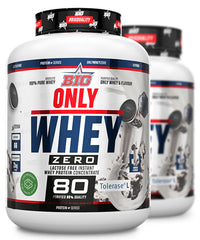
![CREABIG [Creapure®]](http://bigsupps.site/cdn/shop/products/producto_BIG_creabig_creapure_250g_0noflavour_500x600_8c48a126-a2a2-46a5-9bbd-8763ab82d768_200x.jpg?v=1757315967)
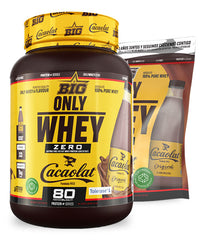
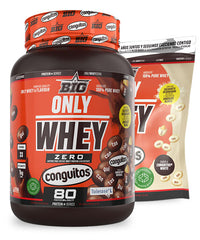
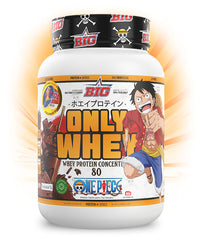
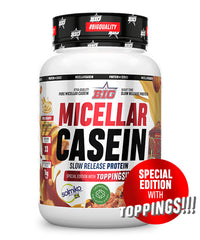
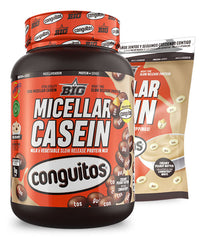
![CFM ISO ZERO [saco]](http://bigsupps.site/cdn/shop/files/producto_cfm_doypack_0noflavour_500x600a_200x.jpg?v=1750981452)
![CLEAR ISO ZERO [750g]](http://bigsupps.site/cdn/shop/files/producto_BIG_clearprotein_icepop_0noflavour_500x600a_200x.jpg?v=1757074297)
![CREABIG FIESTA® KOJAK® flavor - [250g]](http://bigsupps.site/cdn/shop/files/producto_BIG_creabig_kojak_0noflavour_500x600a_200x.jpg?v=1763548822)
